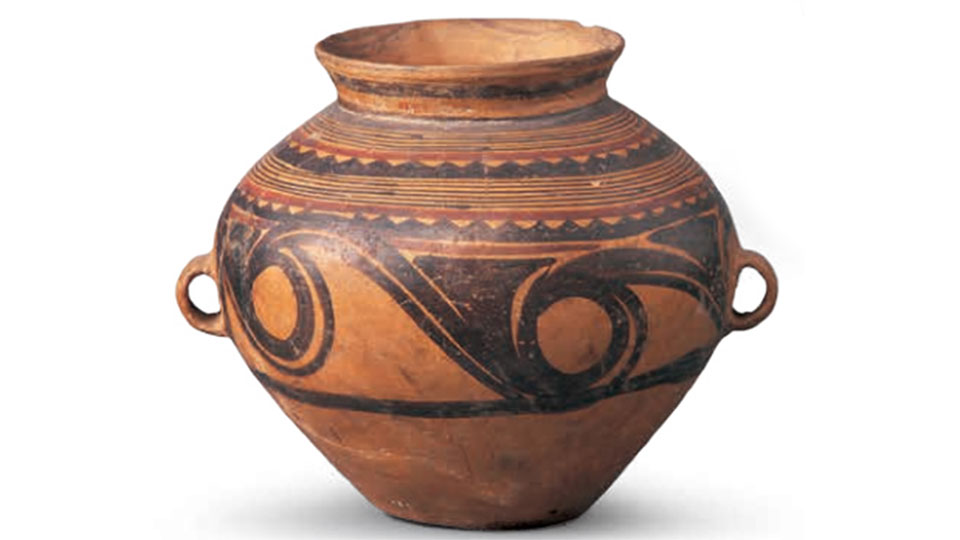Painted Clay Jar with Two Ears and Spiral Pattern

Copyright: A Journey into China’s Antiquity– Chinese History in Cultural Relics, Blossom Press
The clay jar seems to blow out a gust of fresh wild breeze over our face. Do you want to have an artwork like the picture in your home?
Clay jars of this type usually had a small mouth. Most of them were recovered from graves. The one shown here had a pattern of parallel lines and triangles around the neck and spirals around the body, designs that were quite typical of Majiayao culture.
At the upper valley of Yellow River abounds with many legacies mainly of primitive Chinese culture, which was scattered in present-day Gansu and Qinghai provinces in the center of China.
With the West Gansu Plain as the center, this culture extended from the mountainous east Gansu all the way west to Hexi Corridor and northeast Qinghai, reaching northern Gansu and southern Ningxia in the north and mountainous southern Gansu and northern Sichuan in the south.
The culture at this area, which existed between 3300 BC and 2050 BC, was roughly marked by three stages of sustained development, one of them is Majiayao Culture, and the other two are Banshan Culture and Machang Culture.
The vast territory of China was home to numerous clan tribes. Each contributed to the development of ancient Chinese culture by creating its own distinctive culture under different natural conditions.
